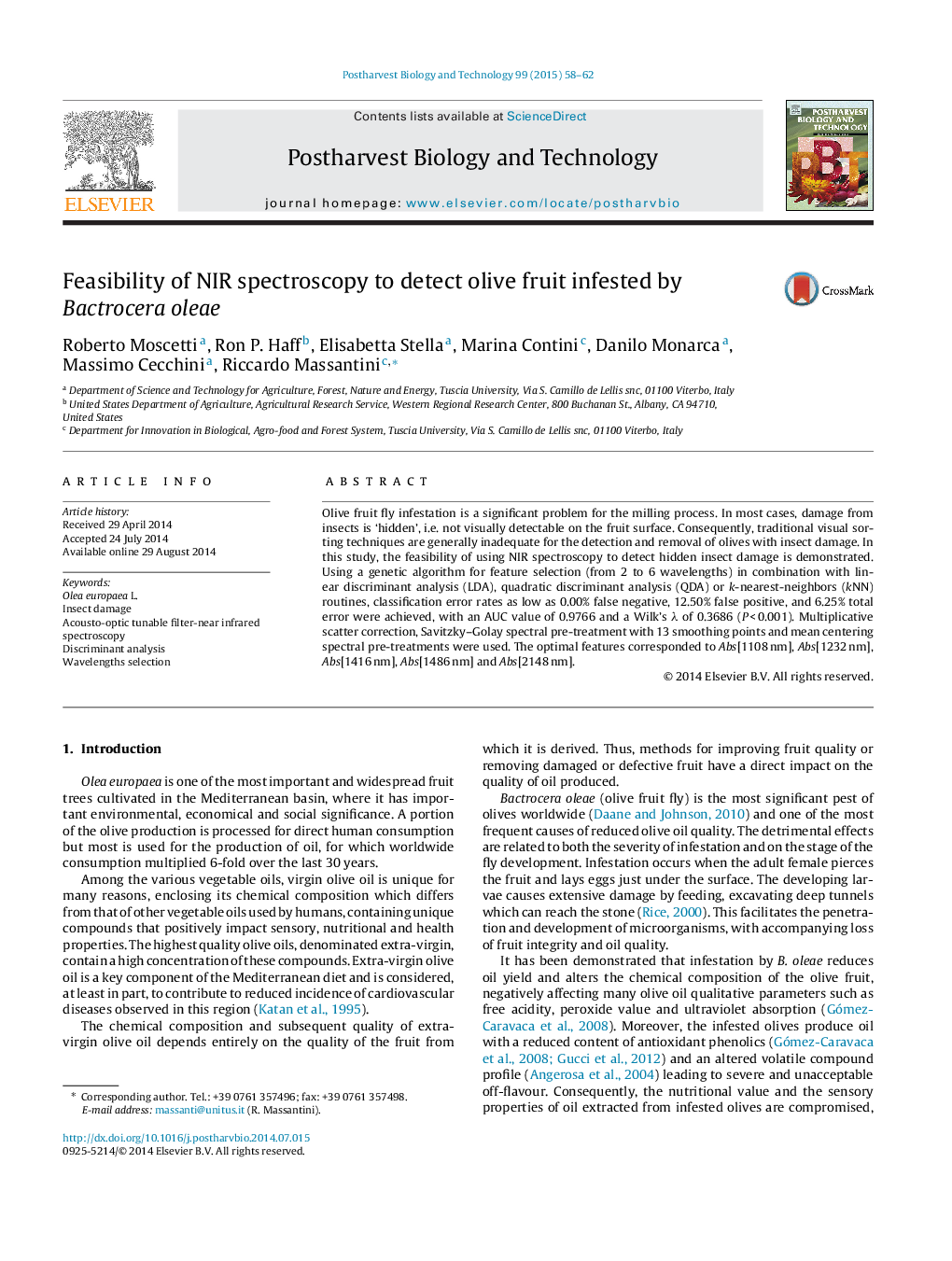| کد مقاله | کد نشریه | سال انتشار | مقاله انگلیسی | نسخه تمام متن |
|---|---|---|---|---|
| 4518118 | 1624995 | 2015 | 5 صفحه PDF | دانلود رایگان |

• NIR spectroscopy is a feasible method for detection of olive fruit fly damage.
• QDA allows reliable detection of infested olives.
• Features were selected within the 1100–1250 nm and 1400–1500 spectral bands.
• The suggested approach provides the basis for a rapid online detection system.
• The NIR based method yielded an accuracy of around 94%.
Olive fruit fly infestation is a significant problem for the milling process. In most cases, damage from insects is ‘hidden’, i.e. not visually detectable on the fruit surface. Consequently, traditional visual sorting techniques are generally inadequate for the detection and removal of olives with insect damage. In this study, the feasibility of using NIR spectroscopy to detect hidden insect damage is demonstrated. Using a genetic algorithm for feature selection (from 2 to 6 wavelengths) in combination with linear discriminant analysis (LDA), quadratic discriminant analysis (QDA) or k-nearest-neighbors (kNN) routines, classification error rates as low as 0.00% false negative, 12.50% false positive, and 6.25% total error were achieved, with an AUC value of 0.9766 and a Wilk's λ of 0.3686 (P < 0.001). Multiplicative scatter correction, Savitzky–Golay spectral pre-treatment with 13 smoothing points and mean centering spectral pre-treatments were used. The optimal features corresponded to Abs[1108 nm], Abs[1232 nm], Abs[1416 nm], Abs[1486 nm] and Abs[2148 nm].
Journal: Postharvest Biology and Technology - Volume 99, January 2015, Pages 58–62